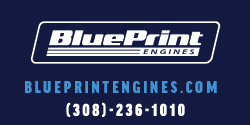mstrk
New Member
Hi guys,
My 318 LA '68 Monaco is due for some engine restoration.
It has been running and driving from the moment i got it for years without any problem, but it now sputters and lacks power. (ever since July '23 as seen in my other threat)
I want to do a rebuild, but have a couple of questions that i cannot find the answer for or have found so much information that i'm lost again.
I have never seen the inside of a 318LA so this will be my first rebuild.
The one thing i am hoping for is to get some more spice out of it (300-350HP?) but it has to be reliable. With al the information i gathered this is what i came up with:
- Upgrade ignition. It's stock now, replace it all with a complete kit or only coil and module? and which one is best to buy?) I was thinking of a Petronix flamethrower with module OR a simple complete HEI distributor kit (as CBODY67 pointed out)
- new fuel tank, lines and pump. Holly sniper kits are too expensive for me.
- New carburator, the current one is held with tiwraps, but which one? Edelbrock?
- intake upgrade (stock 340 is impossible to find here, maybe also an Edelbrock performer? Anyone has a link or partnumber to buy?)
- The exhaustmanifold is also stock, time for headers or is that useless as some say? if yes, which one? I think i only have room for shortys. I already have a new stainless exhaust frond to back, no idea what diameter. (last owner put this in)
- other cam? everyone has a different opinion on this, if yes, which kit is best to take? Some point to this: https://www.hughesengines.com/Index...FtIEtpdHM=&searchmode=partnumber&partid=31310
I was advised to also upgrade to hardened valve seats because of LPG, going to look for a company that can do that for me.
My 318 LA '68 Monaco is due for some engine restoration.
It has been running and driving from the moment i got it for years without any problem, but it now sputters and lacks power. (ever since July '23 as seen in my other threat)
I want to do a rebuild, but have a couple of questions that i cannot find the answer for or have found so much information that i'm lost again.
I have never seen the inside of a 318LA so this will be my first rebuild.
The one thing i am hoping for is to get some more spice out of it (300-350HP?) but it has to be reliable. With al the information i gathered this is what i came up with:
- Upgrade ignition. It's stock now, replace it all with a complete kit or only coil and module? and which one is best to buy?) I was thinking of a Petronix flamethrower with module OR a simple complete HEI distributor kit (as CBODY67 pointed out)
- new fuel tank, lines and pump. Holly sniper kits are too expensive for me.
- New carburator, the current one is held with tiwraps, but which one? Edelbrock?
- intake upgrade (stock 340 is impossible to find here, maybe also an Edelbrock performer? Anyone has a link or partnumber to buy?)
- The exhaustmanifold is also stock, time for headers or is that useless as some say? if yes, which one? I think i only have room for shortys. I already have a new stainless exhaust frond to back, no idea what diameter. (last owner put this in)
- other cam? everyone has a different opinion on this, if yes, which kit is best to take? Some point to this: https://www.hughesengines.com/Index...FtIEtpdHM=&searchmode=partnumber&partid=31310
I was advised to also upgrade to hardened valve seats because of LPG, going to look for a company that can do that for me.
Last edited:

















